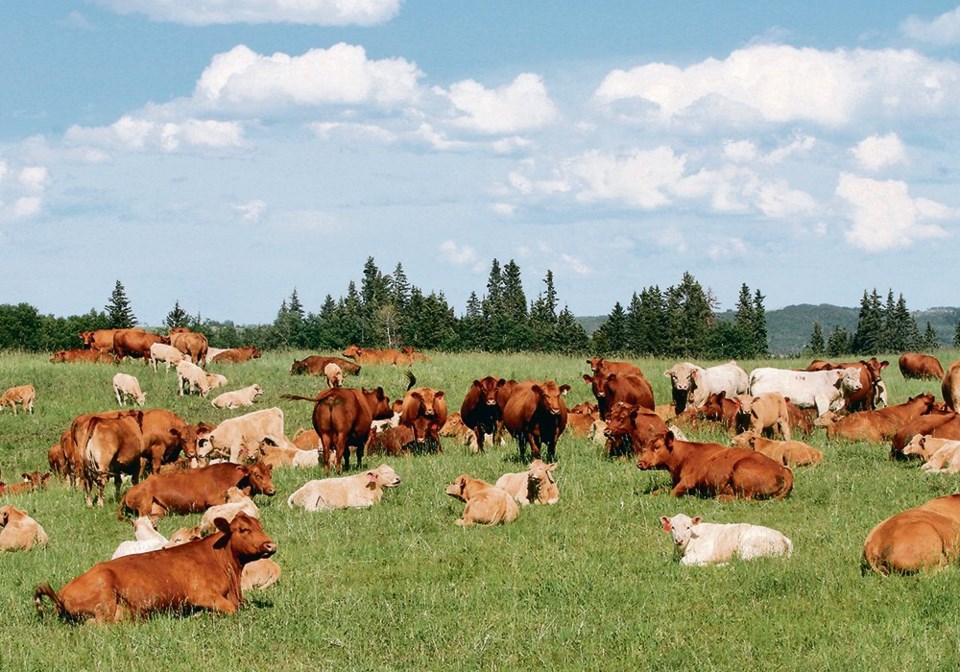WESTERN PRODUCER — Drought and high feed and forage costs have pushed Canadian and American beef cow herds down to the smallest level in many years.
That should mean rising feeder and fed cattle prices over the next few years, but profitability for the cow-calf and feedlot producers will depend on how soon feed costs fall.
It also means beef consumers won’t see price relief at the meat counter for the foreseeable future.
Drought devastated feed production on the northern Plains last year. This year, the drought has shifted south, focusing on Texas and Oklahoma, the two most important cow-calf states in the United States.
In addition to high feed costs, cattle producers also face the effects of much higher fuel costs and all the other components of damaging inflation.
In Canada, the number of beef cows fell to 3.5 million as of Jan. 1 of this year. That was the smallest since the 3.48 million counted at the same point in 1990, following the drought years in the late 1980s.
In the U.S. on Jan. 1, the beef cow herd stood at 30.13 million, down 2.3 percent from the previous year.
Cow slaughter this year in the U.S. is up 14.6 percent over last year at the same point.
Scott Brown, a professor and livestock economist at the University of Missouri, noted that the pace of cow slaughter is such that by Jan. 1, 2023, the national cow herd will likely be close to the 29 million last seen in 2014, following the 2011-13 drought in the southern U.S.
The forecasted decline of about one million in the beef cow herd by Jan. 1, 2023, was reinforced by the mid-year livestock census the U.S. Department of Agriculture released July 22. As of July 1, the cow herd stood at 30.35 million head, down from 31.1 million at the same point last year.
In Canada, cow slaughter is up five percent over last year, but the cull is not as aggressive as it was in 2021 when it was up 12 percent over the year before.
Canfax, the Canadian cattle market information report, noted in its July 15 issue the financial difficulties that producers here faced.
It referred to data from the Canadian Cow-Calf Cost of Production Network, focusing on the Alberta component.
It looks at average costs from weaning to weaning for a 250-head herd and compares them to cattle prices to arrive at an average profit margin for a calf crop. The formula shows that returns for a cow-calf pair were great in 2014 and 2015, at more than $700. They fell off in the following years but were still positive. The average for the last five years was $269 for a 1,200 pound cow and calf and $305 for a 1,500 lb. cow and calf.
With the drought last year driving feed costs higher, total costs per cow-calf rose about 20 percent for the 2022 crop. The profit trend turned negative, with a loss of $27 for the 1,200 lb. cow and a loss of $43 for the 1,500 lb. cow, Canfax said.
That was the first loss since 2010.
Producers are surely hoping for better cattle prices and lower costs in the coming year.
The July Livestock, Dairy and Poultry Outlook from the U.S. Department of Agriculture showed it foresees higher feeder cattle prices ahead.
Using medium-frame feeder steers at Oklahoma City as the benchmark, it sees a third quarter average price of US$168 per hundredweight, up from $159.59 in the third quarter last year.
The fourth quarter forecast is $171 per cwt., up from about $147 in the same quarter last year.
It sees a first quarter 2023 average at $169 and the second quarter at $186. The average for full year 2023 is $199.25, up 22 percent from the full year 2022 at $163.35.
If that is the case, then here in Canada in 2023 we might see 800-900 lb. feeder steer prices rivalling those of 2015 when prices ranged from around C$235-$260 per cwt. for much of the year.
That estimate of course will be affected by the exchange rate and other factors.
So, there is positive news on the price forecast.
As for costs, hay costs should be less this year.
The Alberta Farm Input Survey showed quality hay over 50 percent alfalfa at the farmgate peaked at $278 per ton in April, about $125 more than in April 2021. The survey said prices eased in May to about $253 per ton.
The July 12 Alberta crop report said hay harvest was delayed but yields were expected to be near average, which should help prices fall further. But yields in Saskatchewan might not be so good given the larger dry area.

